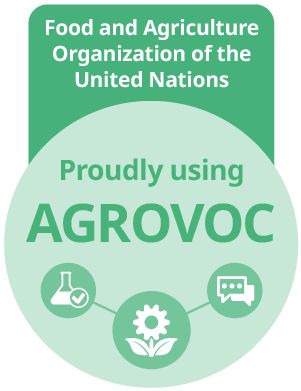Nutritional, Antioxidative and Aflatoxin Safety Assessment of Ginger-Turmeric Tea: A Functional Herbal Beverage Tea
Antioxidative and Aflatoxin Safety Assessment of Ginger-Turmeric Tea
DOI:
https://doi.org/10.54393/df.v6i3.176Keywords:
Ginger, Turmeric, Herbal Tea, Nutritional Facts, Aflatoxin, Antioxidant ActivityAbstract
Turmeric and ginger belong to the family Zingiberaceae, which contains bioactive chemicals with a variety of uses. Ginger (Zingiber officinale) has several bioactive components, such as gingerols, zingiberene, caffeic acid, salicylate and capsaicin. It is utilized in a wide range of food and beverages. Turmeric (Curcuma longa) contains numerous physiologically active substances, including Curcumin, dimethoxycurcumin and bis-demethoxycurcumin.Both ginger and turmeric have been used to treat nausea, indigestion, stomachaches, toothaches, insomnia, asthma, diabetes, infertility, neurological issues, rheumatism and memory loss. Apart from water, tea is the most popular beverage in the world. Objectives: To develop ginger-turmeric tea and assess of nutritional facts, aflatoxin and antioxidant potential. Methods: The nutritional facts and aflatoxin were determined by standard AOAC methods, and the antioxidant activity of the ginger-turmeric tea was evaluated by DPPH assay. Results: The results of this study revealed that ginger-turmeric tea has 7.5 ± 0.84% moisture, 5.12 ± 0.65 ash, 0.22 ± 0.01% fat, 14.75 ± 1.67% fiber, 8.10±0.82% protein, carbohydrates 64.25 ± 3.90, and energy 292 ± 5.30 kcal/100g, while the results of aflatoxin study showed that aflatoxins (B1, B2, G1 and G2) were absent. The significant antioxidant capacity DPPH (% inhibition) was found to range from 25.50 ± 1.20–74.80 ± 2.77% at concentrations of 0.2–1.0 mg/mL, significant differences in various concentrations p<0.05 were found. Conclusions: This study concluded that the developed ginger-turmeric tea is a good source of protein, fiber and has a high content of natural antioxidants, making it advantageous for treating oxidative stress.
References
Garg SK, Shukla A, Choudhury S. Polyphenols and Flavonoids. In Nutraceuticals in Veterinary Medicine. Cham: Springer International Publishing. 2019 May: 187-204. doi: 10.1007/978-3-030-04624-8_13.
Onyegbula AF, Ahmed T, Olorunfemi AP, Lawal IO, Akande EJ. Research Article Comparative Studies of Antioxidant Activity and Profile of Some Spices. International Journal of Agricultural and Applied Sciences. 2024 June; 5(1): 1-5. doi: 10.52804/ijaas2024.511.
Mahmudati N, Nurdiana H, Wahyono P. Antioxidant Activity and Phenolic Content of Ginger (Zingiber Officinale Roscoe) Combination with Cinnamon (Cinnamomum Burmanii) and Sappan Wood (Caesalpinia Sappan) as an Anti-Diabetic. GSC Biological and Pharmaceutical Sciences. 2022; 20(3): 001-5. doi: 10.30574/gscbps.2022.20.3.0336.
de Oliveira Filho JG, de Almeida MJ, Sousa TL, dos Santos DC, Egea MB. Bioactive Compounds of Turmeric (Curcuma Longa L.). In Bioactive Compounds in Underutilized Vegetables and Legumes. Cham: Springer International Publishing. 2021 Jul: 297-318. doi: 10.1007/978-3-030-57415-4_37.
Jiang T, Ghosh R, Charcosset C. Extraction, Purification and Applications of Curcumin from Plant Materials-A Comprehensive Review. Trends in Food Science and Technology. 2021 Jun 1; 112: 419-30. doi: 10.1016/j.tifs.2021.04.015.
Tanveer H, Glesener H, Su B, Bolsinger B, Krajmalnik-Brown R, Voth-Gaeddert LE. Evaluating Methods for Aflatoxin B1 Monitoring in Selected Food Crops within Decentralized Agricultural Systems. Toxins. 2025 Jan; 17(1): 37. doi: 10.3390/toxins17010037.
Al Naqbi K, Manoharan R, Nair CS, Kandhan K, Alyafei M, Jaleel A. Exploring The Antioxidant Potential of Medicinal Plants in the United Arab Emirates (UAE): Emphasizing Their Significance in Novel Drug Development. Pharmacy Practice. 2025 Feb; 23(1): 1-1. doi: 10.18549/PharmPract.2025.1.3113.
Heriansyah P, Aziz SA, Sukma D, Nurcholis W. Antioxidant Capacity of Coelogyne Pandurata Extracts at Different Phenological Phases. Revista Brasileira de Engenharia Agrícola e Ambiental. 2024 Nov; 29(02): e279352. doi: 10.1590/1807-1929/agriambi.v29n2e279352.
Zahra N, Tanveer R, Zaheer M, Moosa H, Saeeed MK, Shahzad K et al. Aflatoxin Types, Permissible level, Factors Responsible for Aflatoxin Contamination, Determination and Detoxification Methods in Animal Feed. Chemical Science and Engineering Research. 2021 Nov; 3(8). doi: 10.36686/Ariviyal.CSER.2021.03.08.040.
Agroindustriais P. AOAC. Official methods of analysis of the Association of Official Analytical Chemists. Caracterização, Propagação E Melhoramento Genético De Pitaya Comercial E Nativa Do Cerrado. 2013 Mar; 26(74): 62.
Saeed MK, Zahra N, Saeed A, Babar L, Malik M, Shehbaz M et al. Isolation and Quantification of Anthocyanins from Red Cabbage (Brassica Oleracea L.) and Its Potential Uses as Antioxidant in Natural Food. ACTA Pharmaceutica Sciencia. 2024; 62(4). doi: 10.23893/1307-2080.APS6259.
Charles DJ. Antioxidant Properties of Spices, Herbs and Other Sources. Springer Science and Business Media. 2012 Nov.
Singh J, Nigar I, Kumar D, Sharma S, Kumar H, Rani D et al. Health Benefits of Ginger: A Review. Review. Journal of Ayurvedic and Herbal Medicine. 2024; 10(2): 49-55.
Shehu A, Shehu A, Umar A, Yahaya BU, Mustapha I. Proximate and Phytochemical Analysis of Some Selected Spices; Garlic (Allium Sativum), Ginger (Zingiber Officinale) and Onion (Allium Cepa). International Journal of Botany and Horticulture Research. 2023; 1: 115-24. doi: 10.33140/IJBHR.01.01.14.
Xiao HW and Mujumdar AS. Importance of Drying in Support of Human Welfare. Drying Technology. 2020 Aug; 38(12): 1542-3. doi: 10.1080/07373937.2019.1686476.
Saeed MK, Anjum S, Zahra N, Shahzadi I, Huma Z, Khan A, ur Rehman K. Determination of Aflatoxin in Various Spices Samples and Its Detoxification Using Black Seed Oil: A Biological Approach: Using Black Seed Oil for Detoxification of Aflatoxins. Diet Factor (Journal of Nutritional and Food Sciences). 2024 Jun: 24-9. doi: 10.54393/df.v5i2.134.
Peng H, Chang Y, Baker RC, Zhang G. Interference of Mycotoxin Binders with ELISA, HPLC and LC-MS/MS Analysis of Aflatoxins in Maize and Maize Gluten. Food Additives and Contaminants: Part A. 2020 Mar; 37(3): 496-506. doi: 10.1080/19440049.2019.1701717.
Mungamuri SK and Mavuduru VA. Role of Epigenetic Alterations in Aflatoxin‐Induced Hepatocellular Carcinoma. Liver Cancer International. 2020 Oct; 1(2): 41-50. doi: 10.1002/lci2.20.
Akhtar MF, Zhang Y, Umar M, Xinru S, Ahmad E, Ma Q et al. Reducing Aflatoxins (Aspergillus Flavus) in Food and Animal Feed by Physical Methods and Chemical Degradation: An Update. Journal of Animal and Feed Sciences. 2025 Apr; 34(2): 161-78. doi: 10.22358/jafs/194729/2025.
Priyanka R, Vasundhara M, Rao GG, Thara BS, Radhika B, Marappa N. Antioxidant Activity of Turmeric (Curcuma Longa L.) Cultivars. Medicinal Plants-International Journal of Phytomedicines and Related Industries. 2017; 9(3): 189-94. doi: 10.5958/0975-6892.2017.00029.6.
Srinivasan K. Ginger rhizomes (Zingiber officinale): A Spice with Multiple Health Beneficial Potentials. Pharma Nutrition. 2017 Mar; 5(1): 18-28. doi: 10.1016/j.phanu.2017.01.001.
Subroto E, Indiarto R, Selly A. Ginger rhizomes (Zingiber officinale) Functionality in Food and Health Perspective: A Review. Food Research (Malaysia). 2021: 497-505. doi: 10.26656/fr.2017.5(1).361.
Nain CW, Mignolet E, Herent MF, Quetin-Leclercq J, Debier C, Page MM et al. The Catechins Profile of Green Tea Extracts Affects the Antioxidant Activity and Degradation of Catechins in DHA-Rich Oil. Antioxidants. 2022 Sep; 11(9): 1844. doi: 10.3390/antiox11091844.
Downloads
Published
Issue
Section
License
Copyright (c) 2025 DIET FACTOR (Journal of Nutritional and Food Sciences)

This work is licensed under a Creative Commons Attribution 4.0 International License.
This is an open-access journal and all the published articles / items are distributed under the terms of the Creative Commons Attribution License, which permits unrestricted use, distribution, and reproduction in any medium, provided the original author and source are credited. For comments









